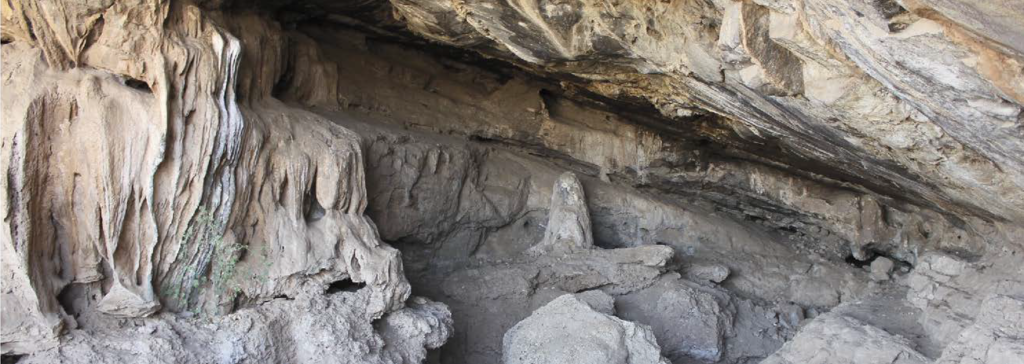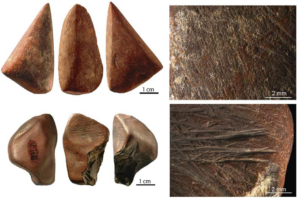
In the case study presented here, the aim of our research was to achive a better understanding of ochre use by Middle Stone Age populations in East Africa through the analysis of 4,213 pieces of iron-rich mineral fragments (40 kg) found at the archaeological site of Porc-Epic Cave, Ethiopia, in layers dated to ca. 40,000 years ago (Rosso, d’Errico and Queffelec 2017).
The term “ochre” refers to a variety of rocks characterized by a red or yellow colour or streak, from soil lumps to ore minerals, containing a high proportion of iron oxides. A large number of ochre pieces discovered at this site show traces of utilization, in particular flaking scars and striations produced by grinding. Twenty-one grindstones used for ochre processing were also recovered at the site (Rosso, Pitarch Martí and d’Errico 2016) in the same areas where most of the ochre pieces were found (Rosso, d’Errico and Zilhão 2014).
The purpose of the tribological analysis, conducted in tandem with more classical analytical techniques, was to better understand how ochre pieces were processed and used.
The analyzed samples included ochre pieces bearing facets created by grinding (figure 1). Even though these facets are often described in literature, there have been no attempts to characterize them quantitatively.
Experimental grinding of ochre lumps similar to those found at the site on grindstones made of different rocks allowed us to create a comparative framework. We recorded the variables commonly used to characterize facets (size, presence of grooves or striations, localization on the fragment etc.) and conducted a non-destructive tribological analysis by using a 3D optical profiler.

Figure 1. Ochre fragments modified by grinding (top left) and by scraping (bottom left) with close-up views illustrating traces diagnostic of the technique used (modified after Rosso et al. 2017).
Learn More?
Please click on ‘Request Application Note’ and download the full application note ‘The use of ochre 40,000 years ago in Africa’.
